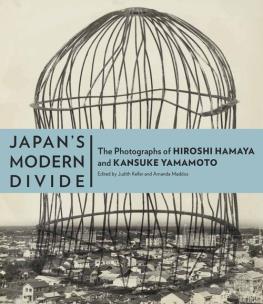- Regulamin
- Koszty dostawy
- Kontakt
- Dziś w ofercie 238 193 produkty
KSIĄŻKI
- Albumy
- Beletrystyka
- Biografie
- Dla dzieci i młodzieży
- Edukacja
- Ekonomia i biznes
- Ezoteryka
- Historia
- Informatyka
- Kalendarze
- Komiksy
- Kryminał i sensacja
- Kultura i sztuka
- Literatura faktu
- Literatura kobieca
- Literatura piękna
- Medycyna
- Nauka języków obcych
- Nauki humanistyczne
- Nauki przyrodnicze
- Nauki ścisłe
- Podręczniki
- Poradniki
- Prawo i administracja
- Przewodniki i podróże
- Psychologia
- Religia
- Sport
- Technika
- Zdrowie i uroda
ZABAWKI
- Artykuły dla niemowląt
- Bączki
- Bujaki i skoczki
- Ciągnij / pchaj
- Dla niemowlaka
- Grzechotki i gryzaki
- Karuzele i pozytywki
- Maty i centra zabaw
- Projektory i lampki
- Sortery i piramidki
- Zabawki
- Edukacyjne i kreatywne
- Figurki
- Klocki
- Lalki
- Pojazdy
- Pluszaki i maskotki
- Sport i rekreacja
- Zabawa w dom
- Zabawki drewniane
- Puzzle
- Do 200 elementów
- 201-500 elementów
- 501-1000 elementów
- Ponad 1000 elementów
- Puzzle 3D
ART. PAP
- Artykuły biurowe
- Artykuły piśmiennicze
- Bloczki i kartki samoprzylepne
- Dziurkacze
- Kalkulatory
- Nożyczki i nożyki
- Skoroszyty
- Teczki
- Wizytowniki
- Zszywacze
- Artykuły szkolne
- Akcesoria szkolne
- Modelowanie
- Notatniki i zeszyty
- Piórniki
- Plecaki i torby
- Pojemniki na śniadanie
- Pomoce naukowe
- Przybory matematyczne
- Przybory rysunkowe
- Upominki i gadżety
- Akcesoria do książek
- Artykuły balowe
- Breloki i zawieszki
- Drobiazgi, różności
- Kubki
- Oferta Świąteczna
- Papeteria, kartki i naklejki
- Skarpetki Many Mornings
- Upominki
GRY
MULTIMEDIA
- Audiobooki
- Beletrystyka
- Biografie i wspomnienia
- Dla dzieci i młodzieży
- Fantastyka
- Filozofia i religia
- Historia
- Literatura faktu i reportaż
- Poradniki
- Sensacja i kryminał
- Filmy DVD/BD
- Animowane
- Biograficzne
- Fantasy
- Horrory
- Komedie
- Romanse
- Science Fiction
- Sensacyjne / kino akcji
- Thrillery
- Muzyka CD
- Alternatywna
- Blues
- Dla dzieci
- Jazz
- Klasyczna
- Piosenka aktorska i poetycka
- Pop
- Rock
- Świąteczna i kolędy
- Akcesoria GSM
- Głośniki
- Kable i adaptery
- Klawiatury
- Myszy
- Słuchawki
PROMOCJE
ZDROWIE
LEGO

Japan's Modern Divide
ISBN:
9781606061329
EAN:
9781606061329
oprawa:
Twarda z obwolutą
podtytuł:
The Photographs of Hiroshi Hamaya and Kansuke Yamamoto
format:
25.0x29.0cm
język:
angielski
liczba stron:
224
rok wydania:
2013
(0) Sprawdź recenzje
Opis produktu
Zasady bezpieczeństwa
In the 1930s the history of Japanese photography evolved in two very different directions: one toward documentary photography, the other favoring an experimental, or avant-garde, approach strongly influenced by Western Surrealism. This book explores these two strains of modern Japanese photography through the work of two remarkable figures: Hiroshi Hamaya and Kansuke Yamamoto.
Hiroshi Hamaya (1915–1999) was born and raised in Tokyo and, after an initial period of creative experimentation, turned his attention to recording traditional life and culture on the coast of the Sea of Japan. In 1940 he began photographing the New Year’s rituals in a remote village, which was published as Yukiguni (Snow country). He went on to record cultural changes in China, political protests in Japan, and landscapes around the world.
Kansuke Yamamoto (1914–1987) became fascinated by the innovative approaches in art and literature exemplified by such Western artists as Man Ray, René Magritte, and Yves Tanguy. He promoted Surrealist and avant-garde ideas in Japan through his poetry, paintings, sculptures, and photographs.
Along with essays by the book’s coeditors, Judith Keller and Amanda Maddox, are essays by Kotaro Iizawa, Ryuichi Kaneko, and Jonathan M. Reynolds, life chronologies, and a selection of poems by Yamamoto translated by John Solt. This book, which features more than one hundred images, accompanies an exhibition of the same name on view at the J. Paul Getty Museum from March 26 to August 25, 2013.
CENA:
158,38
zł
Cena detaliczna:
199,00 zł
20%
rabatu
Najniższa cena z ostatnich 30 dni: 158,38 zł
Produkt niedostępny
Uwaga!!!
Ten produkt jest zapowiedzią. Realizacja Twojego zamówienia ulegnie przez to wydłużeniu do czasu premiery tej pozycji. Czy chcesz dodać ten produkt do koszyka?


Wybierz wariant produktu
